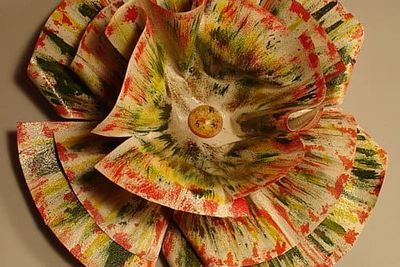It’s 2011, and “green” is the new black. Just recycling your newspapers, plastic, and aluminum is so yesterday. These days you are
Re-Purposing...It's the Green Thing to Do!
You’ve always loved that dresser you inherited for its lines and the memories associated with it, but it’s in the basement under a drop cloth because you don’t need a dresser. You’ve been thumbing through catalogues looking for a media cabinet that doesn’t look like a garden variety media cabinet. Sure, you could go out and buy something new (bo-ring)...or you could get involved in a re-purposing project! Less involved and invasive than interior design, but more creative than mere retail therapy, re-purposing--especially in partnership with a professional--allows you to take a piece that has intrinsic value to you and customize it to your unique needs. You get to envision, experiment, design (on a manageable scale), and create. And there is no danger of walking into someone’s home and seeing the exact same media cabinet. You now own more than a piece of furniture...you own a conversation piece.
Here are some general tips when considering a re-purposing project:
1. Think carefully about what you want the piece to be. What do you need? Really study the piece and take note of the elements you will want to keep intact and those you don’t mind altering for the sake of functionality. (When we collaborate on re-purposing projects with our clients, we put the piece on the bench and look at it under 500 watts and really get to know every curve, joint, and flake of paint.)
2. Don’t throw away those magazines and catalogs yet...cut out pictures of design elements and even hardware you are drawn to. (For example, the installation of some slick, modern drawer slides will allow the drawers in your 1800s dresser to close silently with the touch of a finger.)
3. Remember that every case is unique. Some pieces will undergo a full-scale overhaul. Others will just need a bit of revitalizing, and may retain their original purpose. Try to find a professional who will apply the least amount of toxic, invasive techniques to the task at hand. (In many cases, total stripping and spray finishing is not warranted; a hand-application technique--even in some cases a French polish--will be far more appropriate and environmentally responsible.)
4. Keep in mind that re-purposing may not always be the least expensive option, but if what you are looking for are stunning results, unique expression, fresh functionality, and low environmental impact, there is no better option. So remember the carbon footprint the next time you consider buying “cheap and cheerful.” You get what you pay for, and the planet pays for what you get!
Carolyn J. Sullivan is Director of Marketing for Rosewalker Design Project, a mixed media decorative arts and restoration company in Nashville. They can be found at www.rosewalkerdesignproject.com.
